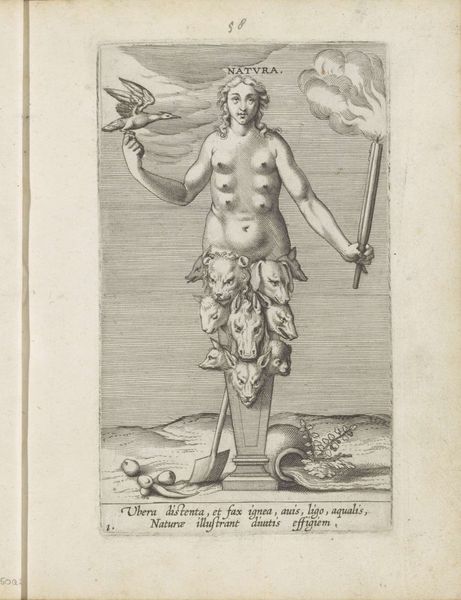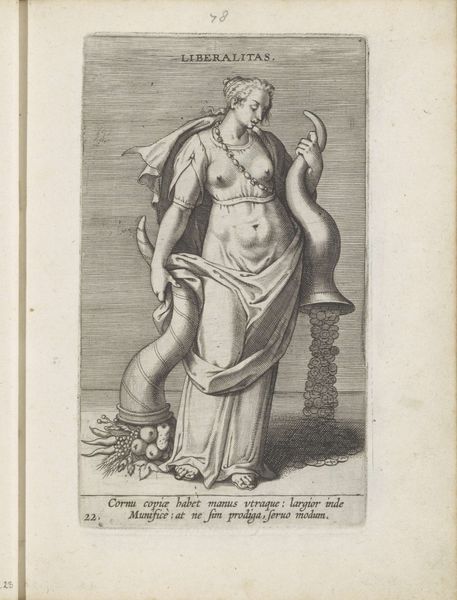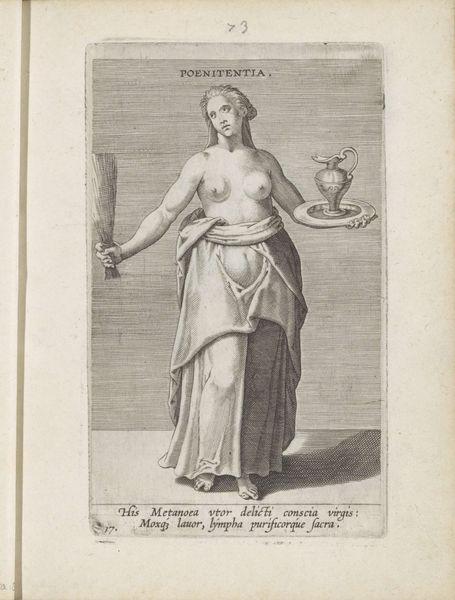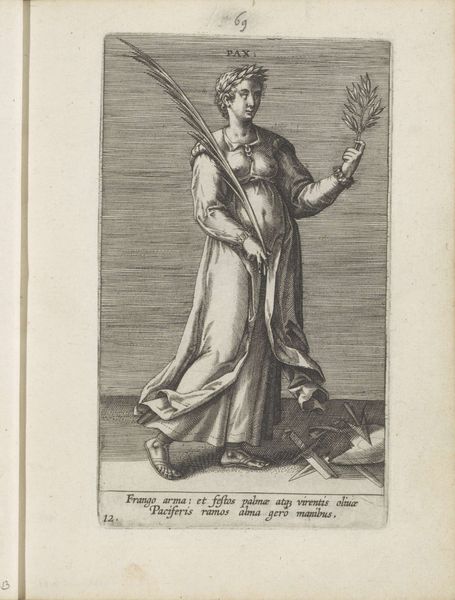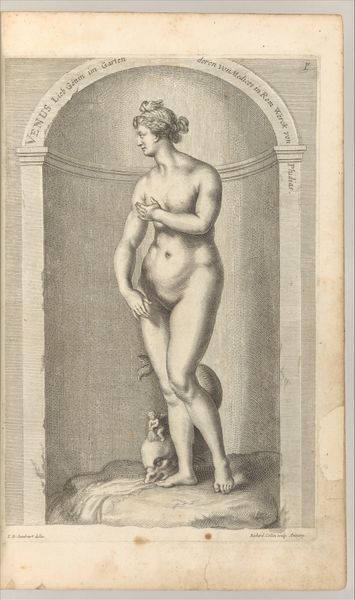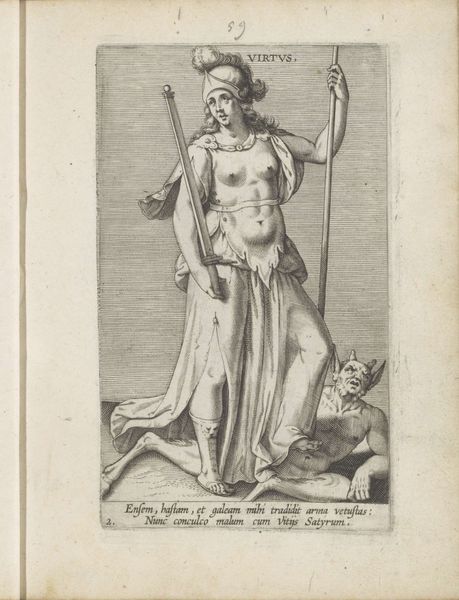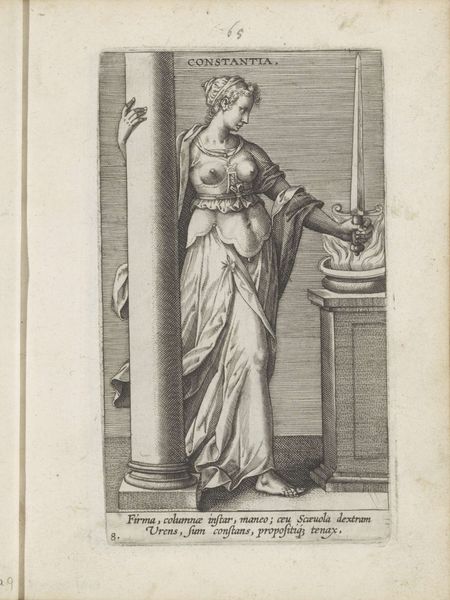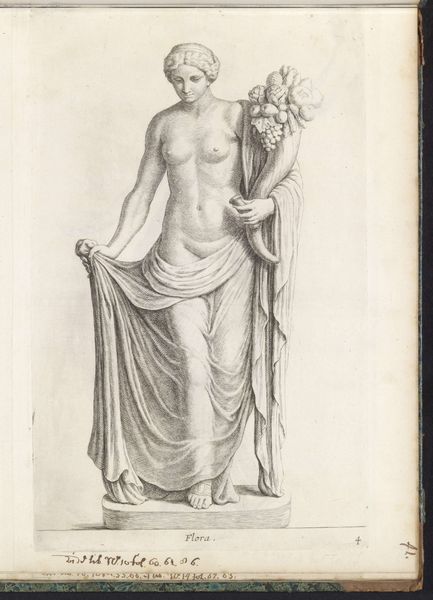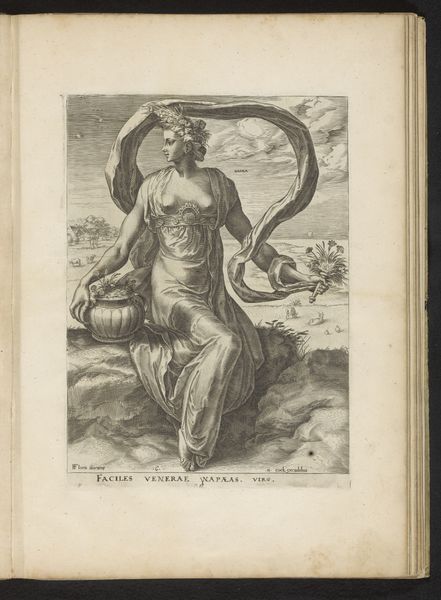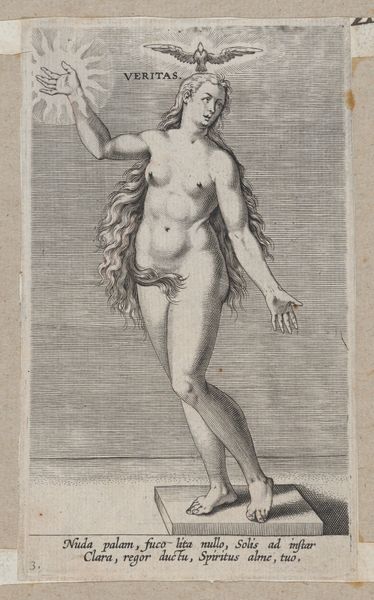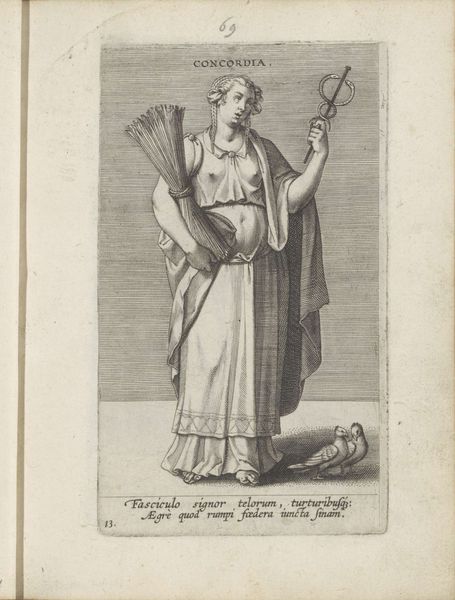
print, engraving
#
allegory
# print
#
old engraving style
#
11_renaissance
#
nude
#
engraving
Dimensions: height 153 mm, width 87 mm
Copyright: Rijks Museum: Open Domain
Curator: Welcome to the Rijksmuseum. Before us is "Afrika," an engraving by Philips Galle, created around 1585 to 1590. Editor: My initial reaction is a sort of stark simplicity. The stark, linear quality of the engraving creates a really graphic feel. And the figure is idealized, classical. Curator: Precisely. The formal elements direct our understanding. Notice how Galle uses line weight and density to create form and shadow. It's a masterful display of engraving technique. The figure, almost nude, is crowned with solar rays. Editor: It’s all very… contrived though. The textures look flattened. The cloth seems rather carelessly draped. The plant seems too simplistic. The process and materials, of a readily reproducible image are important here. It’s part of a larger system of knowledge being disseminated about the world. What was Galle thinking? Curator: He was participating in the allegorical tradition of representing continents as female figures. The sun crown and, presumably, the balsam plant, allude to the perceived climate and resources of Africa at that time. Consider the composition. Her pose, contrapposto, gives it dynamism, creating a visual hierarchy focusing on her face. Editor: Right, a visual hierarchy dictated by a European gaze. These engravings became ways of cataloging, controlling, and ultimately exploiting regions. The 'Afrikaness' here feels generic, based more on assumptions and colonial desires than actual knowledge. And those assumptions clearly informed what Europeans sought, extracted, and consumed. Curator: Indeed, this engraving, viewed through our modern lens, shows that early geographical explorations weren't neutral. The stark linearity is a sign. They were inextricably bound to emerging economic interests and projections. Editor: The piece leaves me unsettled, thinking about the legacy of those initial European projections that this image helped propagate and materialize, really. It is crucial to recognize these processes that still perpetuate unequal distribution of wealth today. Curator: Quite so. Examining the details, the symbolism, forces us to confront those troubling realities embedded within this seemingly straightforward representation. I encourage you to view other examples and consider what Galle shows us.
Comments
No comments
Be the first to comment and join the conversation on the ultimate creative platform.
